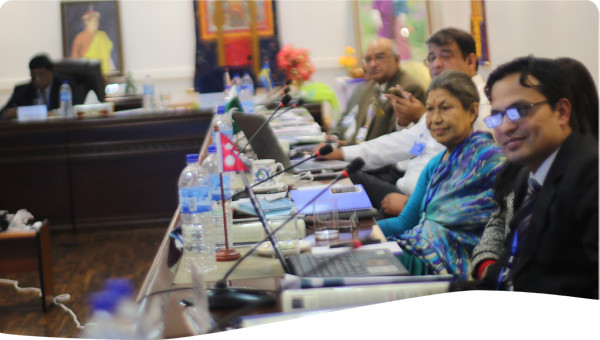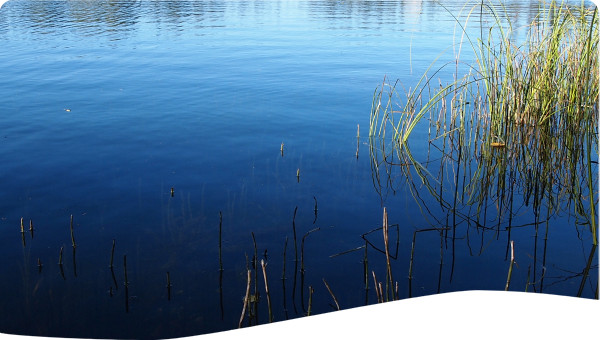The Government of Senegal engaged the country in an Integrated Water Resources Management (IWRM) process since the early 2000s. The Global Water Partnership in West Africa (GWP-WA), through PAWD 1 launched in 2003, has strongly supported this process by contributing to the mobilisation and capacity building of stakeholders as well as to the implementation of the National Action Plan for IWRM (PAGIRE) together with the IWRM-PAP 2008-2015. The dynamics continued with the revision of the PAGIRE in 2017 and the setting up of the PAGIRE 2nd phase 2018-2030.
In Senegal, a Sahelian country, freshwater resources are becoming scarce due to increasing demand and their quality is endangered (pollution, proliferation of aquatic plants) in a context of continuous climate degradation since the 1960s. The concept of IWRM has emerged as an approach to ensure a sustainable balance between supply and demand for all needs, including those of ecosystems.
Before the launch of the IWRM process, the water sector was confronted with the weakness of consultation frameworks at national and local levels and the nonor low involvement of local authorities, as water management was not one of the competences that had been transferred to them. With the implementation of vast urban and village water programmes during the 2000s, it appeared necessary to define the modalities of water allocation and to associate the stakeholders in the management of both infrastructure and the resource.
Local authorities and village communities have gradually mobilised to collect and exploit water resources. From the 2000s onwards, associations of borehole users (ASUFOR) developed, while water management coordination structures were set up on an experimental basis at the level of rivers and other hydrographic entities such as the Lac de Guiers. However, decisionmaking and water management powers were still concentrated at the level of the central administration and there was a lack of intersectoral coordination for water and sanitation management. This is why, from 2004, the State decided to engage the country in an IWRM process with the development of a PAGIRE (IWRM Action Plan). The Senegal Country Water Partnership (CWP-Senegal) was set up in November 2002 to facilitate the participation of all stakeholders in the IWRM planning and implementation process and in the promotion of the right to water.
The launch of the ‘Partnership for African Water Development’ (PAWD 1) project by GWP-WA with financial support from Canada was an opportunity in Senegal, in a context of disengagement of the State from the production sphere, decentralisation, reduction in the number of staff in the public water administration, and frequent changes in the institutional framework housing the water sector.
The challenges were related to the organisation of a water resources planning system, the improvement of knowledge on these resources, the division of the territory into management areas, the inclusion of IWRM principles in policy documents as well as in some development programmes.
The IWRM planning and implementation process in Senegal has benefited from technical and financial support from GWP-WA through CWP-Senegal as part of
the implementation of the PAWD project.
PAGIRE was developed from 2004 to 2007 with the contribution and facilitation of CWP-Senegal and then validated by the sector’s stakeholders. CWP-Senegal
participated in the situational analysis and supported the participatory planning process that led to the PAGIRE: it facilitated the information and awareness-raising workshops on IWRM and the validation of the results of the various studies from the local to the national level. It provided capacity building for the process.
PAGIRE was adopted in 2007 by the government. A capacity building process led by GWP-WA resulted in the development of the IWRM strategies and priority action plan (IWRM-PAP, 2008-2015). This last operational document of the PAGIRE submitted by the Directorate of Water Resources Management and Planning (DGPRE) to the development partners was financed to the tune of more than 12 million Euros, i.e. 65% of the total budget of the PAP-GIRE 2008-2015. PNE-Senegal, which had supported the contribution of the populations to the elaboration of the PAGIRE, also supported their contribution to its implementation. More broadly, it has contributed to the understanding of water issues and IWRM principles among stakeholders and supported the development and implementation of IWRM transition strategies and the development of the required capacities at different levels. As a result, the IWRM approach has been appropriated by stakeholders in the water sector.
Through its members, CWP-Senegal has positioned itself as a key factor in the process of capacity building of stakeholders on IWRM for their mobilisation and support in the framework of the elaboration of the PAGIRE. The capacities acquired through this process are still sought and valued in the framework of IWRM implementation.
According to the DGPRE, the implementation of the PAGIRE has resulted in a clear improvement in knowledge of the state of water resources and in the capacity to manage and plan water demand.
Administrative agents, private sector actors, local elected officials and representatives of grassroots community organisations took part in more than 14 awareness and information workshops and IEC activities in the intervention zones of the water brigades.
The participation of stakeholders in the workshops is an important means of popularizing water-related challenges with a view to better managing the resource, both at the national and local levels.
Various actors have been influenced and supported the ongoing process of IWRM planning and implementation at one time or another. These include donors (Canadian
Cooperation, EU, ADB, IDA, UNDP), universities (doctoral schools), international and non-governmental organisations (IUCN, Eau vive, EVE, Caritas), local authorities (Diembéring, Lac de Guiers), public administration (DGPRE, PEPAM), transboundary basin organisations (OMVS, OMVG) and the private sector (CSS, zirconium miners).
Capacity building has been a major contribution to the development of PAGIRE. The integration of IWRM in the implementation of the MDGs and then the SDGs has allowed many actors to become aware of the relevance of this approach. Senegal now knows the availability of water resources and has the means to monitor them. It is better equipped to provide an adequate and sustainable response to water demand.
The most visible impact results are:
- the revitalisation of the planning system in the water sector, with the mobilisation of state funding in the implementation of IWRM, the support of PEPAM to the process of territorialisation of IWRM, the involvement of more donors and NGOs in the implementation of IWRM locally and the development and implementation of IWRM programmes in the basin agencies;
- the beginning of effective implementation of IWRM with the revision of the Water Code and the strengthening of knowledge, the better participation of stakeholders in planning exercises, in projects and impact studies and the establishment of local water management frameworks.
The IWRM-PAP 2008-2015 was a pilot project in terms of water resources management
planning using the IWRM approach. Its three main strategic axes have enabled progress to be made, which has led to the IWRM-PAP 2 2018-2030:
- improving knowledge and capacity for water resources management;
- creating an enabling environment for IWRM implementation through legal, organisational and policy reforms;
- improving communication, information, education and awareness on water.
The IWRM-PAP 2008-2015 laid the foundations of IWRM in Senegal and the momentum has continued with the adoption of the IWRM-PAP 2. The strategy of territorialisation of water management advocated through the definition of geographical planning units allows for better consideration of local realities, with the involvement of different stakeholders in the governance mechanisms of the resource.
This strategy settles a series of questions, notably at the institutional and organisational
levels, but also in terms of the coherence of sectoral interventions and participation. The idea of a national master plan recommended in PAGIRE 2 and integrating all the concerns of the territories will enable the DGPRE to ensure better steering of the IWRM policy at the national level.
In terms of political and legal instruments on water, the revision of the Water Code will make it possible to formalise IWRM and, in so doing, to deal with institutional instability, the sectoral nature of water legislation and the insufficiency of decentralisation measures. It should also allow Senegal to implement the values to which it has subscribed at the international level.
Effective participation of stakeholders is one of the levers of success for IWRM institutionalisation. It requires the animation of an ecosystem of institutions involved in IWRM training, the management of dialogue and collaboration spaces and the provision of information. In Senegal this led to recognition of PAGIRE as a participatory instrument for planning and implementing sustainable WRM.
 Case studies
Case studies
